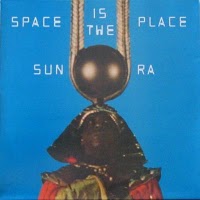 If you like your big bands disciplined, tidy and marching together, then Sun Ra is not for you. They just don’t play that way on Saturn. It feels much more like the band are tumbling down a hill, musical instruments all over, but they are all falling in the same direction and by some miracle they never thump into each other, but are always dodging around, falling through each other’s legs. The first track, the first side, is held together by a simple rhythm played by bass, baritone sax and bass clarinet, and a singer or two repeatedly singing Space Is the Place – but then they are assaulted by percussion, keyboards, shouts and just noise, a chaos of sound that is always threatening to spin the music away into the darkness of space. At times the rhythm does break down, but it always finally returns. At first I thought the 21 minutes was a bit excessive but as I returned to the music, listening to the constantly shifting tensions within the sound, I realised that 21 minutes was exactly what it needed. The album continues with variations of this tension. The featured trumpet, tenor and piano on the second track, “Images,” are calmly normal, as though from a good 1950s hard-bop band, but again the rest of the band set out to upset things: it is as though through Sun Ra’s piano solo the band are sawing away at the piano’s leg, just waiting for the crash as it falls to the ground. “Discipline” is the most intense statement of the basic tension, the finest track (perhaps it should be titled “Discipline and its Enemies”). “On Sea of Sounds” chaos has won, we are thrown away into the darkness – and it’s up to us to go with it and move through the music or just sullenly sit down and cover our ears. The final track brings us back, gives us some ground under our feet. –Nick
If you like your big bands disciplined, tidy and marching together, then Sun Ra is not for you. They just don’t play that way on Saturn. It feels much more like the band are tumbling down a hill, musical instruments all over, but they are all falling in the same direction and by some miracle they never thump into each other, but are always dodging around, falling through each other’s legs. The first track, the first side, is held together by a simple rhythm played by bass, baritone sax and bass clarinet, and a singer or two repeatedly singing Space Is the Place – but then they are assaulted by percussion, keyboards, shouts and just noise, a chaos of sound that is always threatening to spin the music away into the darkness of space. At times the rhythm does break down, but it always finally returns. At first I thought the 21 minutes was a bit excessive but as I returned to the music, listening to the constantly shifting tensions within the sound, I realised that 21 minutes was exactly what it needed. The album continues with variations of this tension. The featured trumpet, tenor and piano on the second track, “Images,” are calmly normal, as though from a good 1950s hard-bop band, but again the rest of the band set out to upset things: it is as though through Sun Ra’s piano solo the band are sawing away at the piano’s leg, just waiting for the crash as it falls to the ground. “Discipline” is the most intense statement of the basic tension, the finest track (perhaps it should be titled “Discipline and its Enemies”). “On Sea of Sounds” chaos has won, we are thrown away into the darkness – and it’s up to us to go with it and move through the music or just sullenly sit down and cover our ears. The final track brings us back, gives us some ground under our feet. –Nick
Album Reviews
Harry Nilsson “Nilsson Schmilsson” (1971)
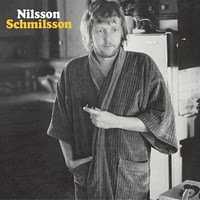 It’s the hallmark of a truly talented popsmith to make a collection of songs this weird and diverse so remarkably palatable. Nilsson is nothing if not inclusive, but he doesn’t pander. A lot of folks will know “Coconut” from Reservoir Dogs, and while that little island oddity is indicative of the adventurousness of the album as a whole, it isn’t indicative at all of any other track. Nilsson un-ironically employs strings, horns, rock guitar, mellotron and whatever else he thinks will do the songs justice, whether they’re his own or one of the three covers. It’s easy enough to let the perfectly crafted sounds waft on by with a smile, but the more I think about them, the more the depth is evident. –Lucas
It’s the hallmark of a truly talented popsmith to make a collection of songs this weird and diverse so remarkably palatable. Nilsson is nothing if not inclusive, but he doesn’t pander. A lot of folks will know “Coconut” from Reservoir Dogs, and while that little island oddity is indicative of the adventurousness of the album as a whole, it isn’t indicative at all of any other track. Nilsson un-ironically employs strings, horns, rock guitar, mellotron and whatever else he thinks will do the songs justice, whether they’re his own or one of the three covers. It’s easy enough to let the perfectly crafted sounds waft on by with a smile, but the more I think about them, the more the depth is evident. –Lucas
Mission of Burma “Vs.” (1982)
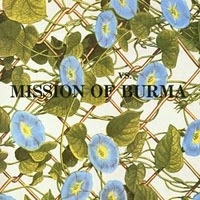 A densely visceral piece of post-punk that manages to evoke a whole spectrum of moods with limited means, I would say this is as important as early Sonic Youth and Husker Du but better than both; as challenging as any of the most difficult work of Wire or Pere Ubu, but less pretentious; as abrasive as the UK’s industrial scene, but a whole lot more fun; hypnotic, like Krautrock, but never usable for ambience; and as meat ‘n’ potatoes as the Ramones. No one quite sounds like this group, who serve up a very noisy piece of rawk that anticipates both grindcore (but slower) and shoegaze (but rougher). Empty genre-bending this ain’t, however. I’ll say it’s one of the half-dozen or so best guitar records of the 80s, especially because, without it, Daydream Nation (one of its only peers in the underground) probably wouldn’t exist. –Will
A densely visceral piece of post-punk that manages to evoke a whole spectrum of moods with limited means, I would say this is as important as early Sonic Youth and Husker Du but better than both; as challenging as any of the most difficult work of Wire or Pere Ubu, but less pretentious; as abrasive as the UK’s industrial scene, but a whole lot more fun; hypnotic, like Krautrock, but never usable for ambience; and as meat ‘n’ potatoes as the Ramones. No one quite sounds like this group, who serve up a very noisy piece of rawk that anticipates both grindcore (but slower) and shoegaze (but rougher). Empty genre-bending this ain’t, however. I’ll say it’s one of the half-dozen or so best guitar records of the 80s, especially because, without it, Daydream Nation (one of its only peers in the underground) probably wouldn’t exist. –Will
Lou Reed “The Blue Mask” (1982)
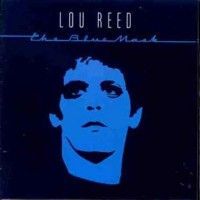
After a dispiriting early-’80s slump at Arista Records, Lou Reed renewed himself artistically by changing labels and releasing The Blue Mask on RCA in 1982. This was a brave move, since The Blue Mask is a resolutely uncommercial album, making no concessions in either its stark, flatly recorded ambience or harrowing themes. However, grace notes abound for the patient listener. Performing with a no-frills setup for the first time since the Velvets, Reed keenly matches words and music with the sparest of means to achieve the maximum end. The Blue Mask pits a hard-earned contentment (“My House,” “Women”) against the dizzying abyss lurking beneath the surface of life (“Underneath The Bottle,” “Waves Of Fear” and, most compellingly, the awesome title track itself). Running through all this, Reed and second guitarist Robert Quine intertwine their instruments, sustaining meditative interludes and codas which are closer to jazz than to rock. Bassist Fernando Saunders’ vibrant tone and supple lines also add a new element of flexibility to Reed’s music, and his gentle falsetto backing vocals make a nice contrast to Reed’s famously edgy song-speech. (Joe Sarno, Muze) –Singer Saints
Tiny Tim “God Bless Tiny Tim” (1968)
 A walking freak show and the ultimate novelty act of the ’60s. But behind Tiny Tim’s fruity falsetto antics lay a genuine love of his material, most of it taken from the 20’s – an equally odd time in popular music–before the rise of Bing Crosby–when nearly all white male vocalists were no-voice freaks. I can’t honestly say that Tim’s debut LP survives its own novelty value in the end. But it’s a well-produced smorgasbord of highly entertaining moments complete with genuine hilarity (“The Viper”) and some genuinely touching performances as well, especially the ones done in the singer’s natural baritone (Gordon Jenkins’ “This Is All I Ask,” “Then I’d Be Satisfied with Life.”) Another curiosity: why was this kind of faux-vaudeville so popular in the ’60s? Does anybody remember “Winchester Cathedral”? In that sense Tiny Tim fit right into his times. During the late ’50s and early ’60s when he performed at Hubert’s Museum (singing Don Gibson’s “Oh Lonesome Me” underwater) and appeared in Jack Smith’s Normal Love, he was merely freakish. –Singer Saints
A walking freak show and the ultimate novelty act of the ’60s. But behind Tiny Tim’s fruity falsetto antics lay a genuine love of his material, most of it taken from the 20’s – an equally odd time in popular music–before the rise of Bing Crosby–when nearly all white male vocalists were no-voice freaks. I can’t honestly say that Tim’s debut LP survives its own novelty value in the end. But it’s a well-produced smorgasbord of highly entertaining moments complete with genuine hilarity (“The Viper”) and some genuinely touching performances as well, especially the ones done in the singer’s natural baritone (Gordon Jenkins’ “This Is All I Ask,” “Then I’d Be Satisfied with Life.”) Another curiosity: why was this kind of faux-vaudeville so popular in the ’60s? Does anybody remember “Winchester Cathedral”? In that sense Tiny Tim fit right into his times. During the late ’50s and early ’60s when he performed at Hubert’s Museum (singing Don Gibson’s “Oh Lonesome Me” underwater) and appeared in Jack Smith’s Normal Love, he was merely freakish. –Singer Saints
Charles Mingus “The Black Saint and the Sinner Lady” (1963)
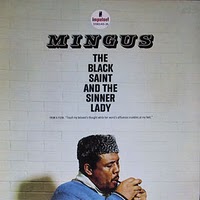 Charles Mingus had always incorporated elements of modern avante-garde composition into his bop-esque and free-jazz/avant garde work while holding himself firmly within the jazz idiom. Here, he cast aside all the restrictions of both genres and meshed the two into an unbelievably complex, and yet emotionally and musically stunning magnum opus. Unlike Mingus’ previous albums, rather than being merely a showcase for different tunes which may have had little to do with eachother melodically and structurally, this cd comprises the six movements of a symphony, and the music and ideas flow into eachother seamlessly. My favorite moment comes during the third track, “Group Dancers” when, after Mingus hints at an amazing melodic figure on the piano, the full ensemble plays it in all its glory. Anyone who loves music is missing something if he or she has never heard this milestone of melodic ingenuity. –Zach
Charles Mingus had always incorporated elements of modern avante-garde composition into his bop-esque and free-jazz/avant garde work while holding himself firmly within the jazz idiom. Here, he cast aside all the restrictions of both genres and meshed the two into an unbelievably complex, and yet emotionally and musically stunning magnum opus. Unlike Mingus’ previous albums, rather than being merely a showcase for different tunes which may have had little to do with eachother melodically and structurally, this cd comprises the six movements of a symphony, and the music and ideas flow into eachother seamlessly. My favorite moment comes during the third track, “Group Dancers” when, after Mingus hints at an amazing melodic figure on the piano, the full ensemble plays it in all its glory. Anyone who loves music is missing something if he or she has never heard this milestone of melodic ingenuity. –Zach
Scorpions “In Trance” (1975)
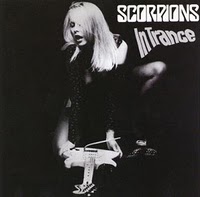 Three albums in and Scorpions are settling into an eccentric, decidedly European mix of piercing Teutonic fury and abject gothic balladry that would hallmark future Uli-era triumphs Virgin Killer and Taken by Force. In Trance features only a handful of hard rockers, but the manic, psyche-searing opener “Dark Lady” (featuring oddly appropriate lead vocals by Roth), tightly-clenched stomp of “Top of the Bill,” and weird, lost in translation “Robot Man” are all stinging entries, while “Longing for Fire” stands out as an unusual, brightly melodic moment. But it’s those troubled, moonlit strolls into balladry that really define the dark undercurrent of In Trance, with the mesmerizing title track, black veiled “Living and Dying,” and thunderous declarations “Evening Wind” and “Life’s Like a River” cementing the album under waves of isolation and melancholia. Only the lumbering blues “Sun in my Hand” hints at a loss of plot, one of Roth’s weirder Hendrix tributes that’s at least partially redeemed in his floating, Floydian instrumental “Night Lights” that closes the album. –Ben
Three albums in and Scorpions are settling into an eccentric, decidedly European mix of piercing Teutonic fury and abject gothic balladry that would hallmark future Uli-era triumphs Virgin Killer and Taken by Force. In Trance features only a handful of hard rockers, but the manic, psyche-searing opener “Dark Lady” (featuring oddly appropriate lead vocals by Roth), tightly-clenched stomp of “Top of the Bill,” and weird, lost in translation “Robot Man” are all stinging entries, while “Longing for Fire” stands out as an unusual, brightly melodic moment. But it’s those troubled, moonlit strolls into balladry that really define the dark undercurrent of In Trance, with the mesmerizing title track, black veiled “Living and Dying,” and thunderous declarations “Evening Wind” and “Life’s Like a River” cementing the album under waves of isolation and melancholia. Only the lumbering blues “Sun in my Hand” hints at a loss of plot, one of Roth’s weirder Hendrix tributes that’s at least partially redeemed in his floating, Floydian instrumental “Night Lights” that closes the album. –Ben
The Gits “Frenching the Bully” (1992)
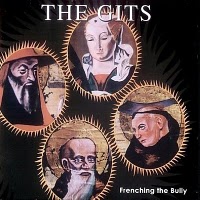 The Gits- Frenching the Bully has always been a very cold bone-chilling listen for me. One that no matter how many times I hear it I cannot think of what might have been for this band. Being veteran’s of the Seattle scene in the early 90’s these guys were some of the select few talented musicians that were poised to be huge rock stars. I really do believe that. Mia Zapata voice is like no other, she had such a passionate escape in her style of singing and a force that was undeniable. I wish Mia was still around, because I know her and the Gits would continue to give us amazing music to enjoy. At least we have this one. Frenching the Bully is a punk rock masterpiece with a furry behind it that will never die. I urge everybody to take the time to discover this band because they are truly one of a kind. –Jason
The Gits- Frenching the Bully has always been a very cold bone-chilling listen for me. One that no matter how many times I hear it I cannot think of what might have been for this band. Being veteran’s of the Seattle scene in the early 90’s these guys were some of the select few talented musicians that were poised to be huge rock stars. I really do believe that. Mia Zapata voice is like no other, she had such a passionate escape in her style of singing and a force that was undeniable. I wish Mia was still around, because I know her and the Gits would continue to give us amazing music to enjoy. At least we have this one. Frenching the Bully is a punk rock masterpiece with a furry behind it that will never die. I urge everybody to take the time to discover this band because they are truly one of a kind. –Jason
Linn County “Proud Flesh Soothseer” (1968)
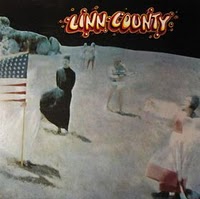 I owned this album for a long while before I got around to playing it… uh, dumb move. I’d passed it over because I thought it was generic, “sweaty,” late sixties blues rock. And, though I like sweaty sixties white guy blues, I can only take so much so often! So, randomly, I finally tossed this on expecting to play it through as background once then file it away as I do (when it comes to certain styles)… uh… well, it IS blues rock, and sweaty, but its progressive blues with some heavy, very cool nods to sike. It’s sike is West Coast sixties genius, but it also plays a bit like later Graham Bond without all the occult mysticism and no African flecked jazz. That said, there is a blues jam in the middle of the record thats tortured and whatnot, BUT the interplay of horns, Hammond, and the song writing makes for some super catchy, and… it’s kinda DANCEABLE!? What progressive blues album can you say THAT about? –Nipper
I owned this album for a long while before I got around to playing it… uh, dumb move. I’d passed it over because I thought it was generic, “sweaty,” late sixties blues rock. And, though I like sweaty sixties white guy blues, I can only take so much so often! So, randomly, I finally tossed this on expecting to play it through as background once then file it away as I do (when it comes to certain styles)… uh… well, it IS blues rock, and sweaty, but its progressive blues with some heavy, very cool nods to sike. It’s sike is West Coast sixties genius, but it also plays a bit like later Graham Bond without all the occult mysticism and no African flecked jazz. That said, there is a blues jam in the middle of the record thats tortured and whatnot, BUT the interplay of horns, Hammond, and the song writing makes for some super catchy, and… it’s kinda DANCEABLE!? What progressive blues album can you say THAT about? –Nipper
Thin Lizzy “Fighting” (1975)
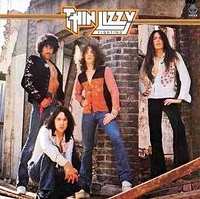 My favourite Thin Lizzy album. Which puts me in a minority, for sure, but I shouldn’t have to defend my assertion that this is hookier than Jailbreak (even if it doesn’t reach that one’s highest heights), more consistent than Johnny the Fox, and retains the sleazy feel that’s more or less buffed away from the overly polished Bad Reputation. This is their most underrated album by far. All the elements of the sound for which they’re best known (twin guitar attack, tense aggression, funky basslines, soulful melodicism and lyricism, etc., pick your cliché) are here in the freshest form; none of the cold metal posturing has crept in; and just about every song has an excitement that’s infectious and totally addictive, especially “Rosalie,” which is rock ‘n’ roll manna. –Will
My favourite Thin Lizzy album. Which puts me in a minority, for sure, but I shouldn’t have to defend my assertion that this is hookier than Jailbreak (even if it doesn’t reach that one’s highest heights), more consistent than Johnny the Fox, and retains the sleazy feel that’s more or less buffed away from the overly polished Bad Reputation. This is their most underrated album by far. All the elements of the sound for which they’re best known (twin guitar attack, tense aggression, funky basslines, soulful melodicism and lyricism, etc., pick your cliché) are here in the freshest form; none of the cold metal posturing has crept in; and just about every song has an excitement that’s infectious and totally addictive, especially “Rosalie,” which is rock ‘n’ roll manna. –Will
Amon Duul II “Yeti” (1970)
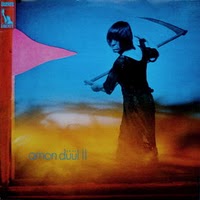 For me this is one of the high points of “Kosmische Musik”. A sprawling double album of druggy, gothic flavored songs and jams that never gets boring. Judging by this album it would be fair to say that, whilst the Americans and British knocked on the doors of perception in the late sixties, the Germans kicked the back door in at the beginning of the following decade. Some of the music on this LP is seriously out there. “Eye-Shaking King” is a case in point; featuring some truly heavy acid guitar work and crazed, effect laden vocals. The opening suite to the album, “Soap Shop Rock” and “Archangel Thunderbird” are other jaw-dropping moments. The latter half of the album is comprised mostly of heavyweight cosmic jams that transcend anything anyone on the West Coast of America could muster. The musicianship is truly sublime throughout this great record and is aided by the excellent wide sound created by the production team. Anyone who is intrigued by Kosmische Musik/Krautrock should ensure that this is one of their first dips into this fascinating genre. –Simon
For me this is one of the high points of “Kosmische Musik”. A sprawling double album of druggy, gothic flavored songs and jams that never gets boring. Judging by this album it would be fair to say that, whilst the Americans and British knocked on the doors of perception in the late sixties, the Germans kicked the back door in at the beginning of the following decade. Some of the music on this LP is seriously out there. “Eye-Shaking King” is a case in point; featuring some truly heavy acid guitar work and crazed, effect laden vocals. The opening suite to the album, “Soap Shop Rock” and “Archangel Thunderbird” are other jaw-dropping moments. The latter half of the album is comprised mostly of heavyweight cosmic jams that transcend anything anyone on the West Coast of America could muster. The musicianship is truly sublime throughout this great record and is aided by the excellent wide sound created by the production team. Anyone who is intrigued by Kosmische Musik/Krautrock should ensure that this is one of their first dips into this fascinating genre. –Simon
U2 “Achtung Baby” (1991)
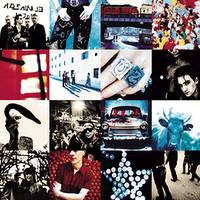 From the opening seconds of “Zoo Station,” Achtung Baby announces itself with a roaring crunch, signaling the end of the earnest U2 of the ‘80s. Between the Edge’s snarling, textured guitars and Adam Clayton’s blood-pumping basslines, Bono’s mood careens from sarcastic and playful to heartbroken and hung-over. Fans were immediately deeply divided, deciding that the band was either brilliant or out of their collective gourd. Nearly two decades later, the album is considered a masterpiece, packed with classics like “Mysterious Ways,” “Until the End of the World,” and fan-favorite “Ultraviolet (Light My Way).” (And let’s not forget “One,” the beautifully ambiguous piece considered by many to be the best song of the ‘90s.) If you’re among the masses who believe U2 to be nothing more than the Irish fathers of Coldplay, take a listen. I guarantee you’ve never heard this side of Bono and the boys. – Reilly
From the opening seconds of “Zoo Station,” Achtung Baby announces itself with a roaring crunch, signaling the end of the earnest U2 of the ‘80s. Between the Edge’s snarling, textured guitars and Adam Clayton’s blood-pumping basslines, Bono’s mood careens from sarcastic and playful to heartbroken and hung-over. Fans were immediately deeply divided, deciding that the band was either brilliant or out of their collective gourd. Nearly two decades later, the album is considered a masterpiece, packed with classics like “Mysterious Ways,” “Until the End of the World,” and fan-favorite “Ultraviolet (Light My Way).” (And let’s not forget “One,” the beautifully ambiguous piece considered by many to be the best song of the ‘90s.) If you’re among the masses who believe U2 to be nothing more than the Irish fathers of Coldplay, take a listen. I guarantee you’ve never heard this side of Bono and the boys. – Reilly


